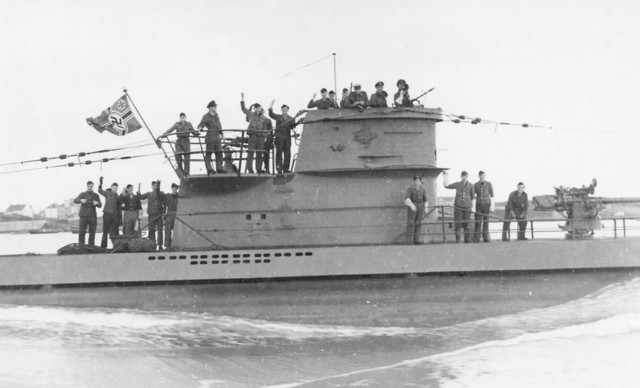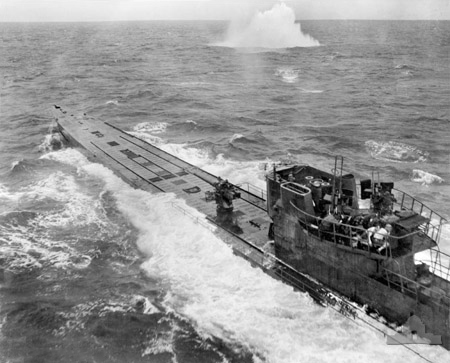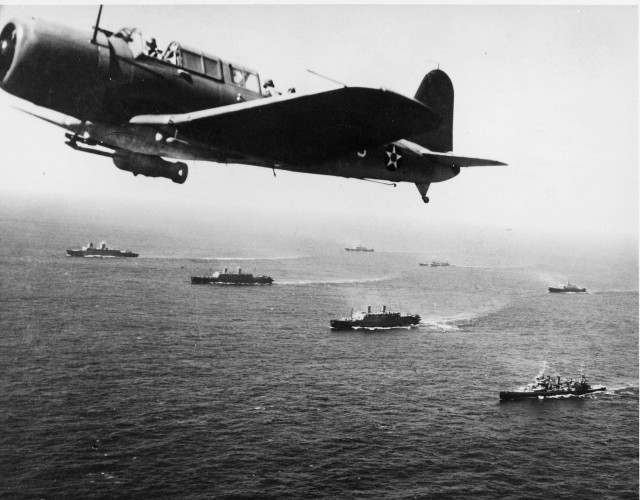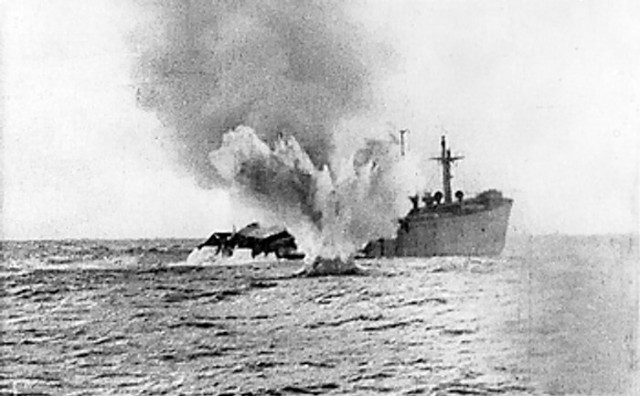Silver streaks on the dark water. Terrifying explosions ripping across the night sky. Silent marauders slipping away and a few hundred thousand tonnes of shipping, food and war material sliding into the cold depths of the Atlantic. These were the telltale characteristics of a German U-boat Wolf Pack strike, a Wolf Pack that came very close to being the deciding factor that would tip the balance of power in favor of Adolf Hitler’s Germany.
The brainchild of Admiral Donitz, the Wolf Pack, was designed to strike and defeat the heavily armed convoy system of transportation that was keeping Britain alive with injections of food and material shipped over from the United States of America.
The idea was that when a U-boat made contact with a convoy, the captain shadowed the convoy while appraising U-boats in the surrounding area, after which the U-boats would muster upon the shadowing vessel.

At a given signal, the U-boats simultaneously launched their torpedoes at multiple targets and then slipped away before the protecting armed ships began a search for the attackers. The system worked far more effectively than the one previously used by the German U-boat raiders, in which a single submarine fired torpedoes upon a single enemy target and then attempted to slip away undetected.
The confusion and sheer weight of numbers of torpedoes being fired at the convoy made it very difficult for ships to maneuver out of harm’s way or to successfully launch an attack against a targeted submarine.

Some submarine aces rose to prominence during the war. Amongst them were men such as the commander of U-47, Günther Prien, and Joachim Schepke who commanded U-100. German strategy and daring encompassed the destruction of more than two hundred and fifty enemy ships as well as armed vessels vital to the defense of Britain such as Ark Royal, Royal Oak, and Hood.
So successful were the Wolf Pack operations that Winston Churchill, Prime Minister of England for a great deal of the war, and the living symbol of British resistance, was once heard to exclaim that “… the only thing that ever really frightened me during the war was the U-boat peril.”

When the U-boats launched an attack on a convoy, individual submarine captains chose their favored method of striking at their enemy. Otto Kretschmer and many other commanders preferred the dangerous tactic of heading straight into the center of a convoy and hitting ship after ship as they sailed past.
Other commanders chose to stay outside the strike zone of protective vessels, such as destroyers, and fire individually upon shipping or to let loose a spread of torpedoes into the convoy.

The Wolf Pack strategy was extremely successful and could quite possibly have brought Britain to its knees. However, with the advent of weapons which were at the cutting edge of groundbreaking British science and technology, the tide began to turn against the German submarines.
Sonar allowed British ships to detect German submarines and the development of the hedgehog depth-charge defense system was to ultimately result in the swinging of the balance of power in the Atlantic in favor of Britain and the Allies.
The Battle of the Atlantic was the most prolonged battle of WWII, lasting from the first day until the last and costing a staggering amount of lives. Over 36,000 sailors and 30,000 merchantmen were killed in the 3,500 merchant ships and 175 warships that were sunk. On the German side, the casualties were around 30,000 men and 783 submarines lost.
